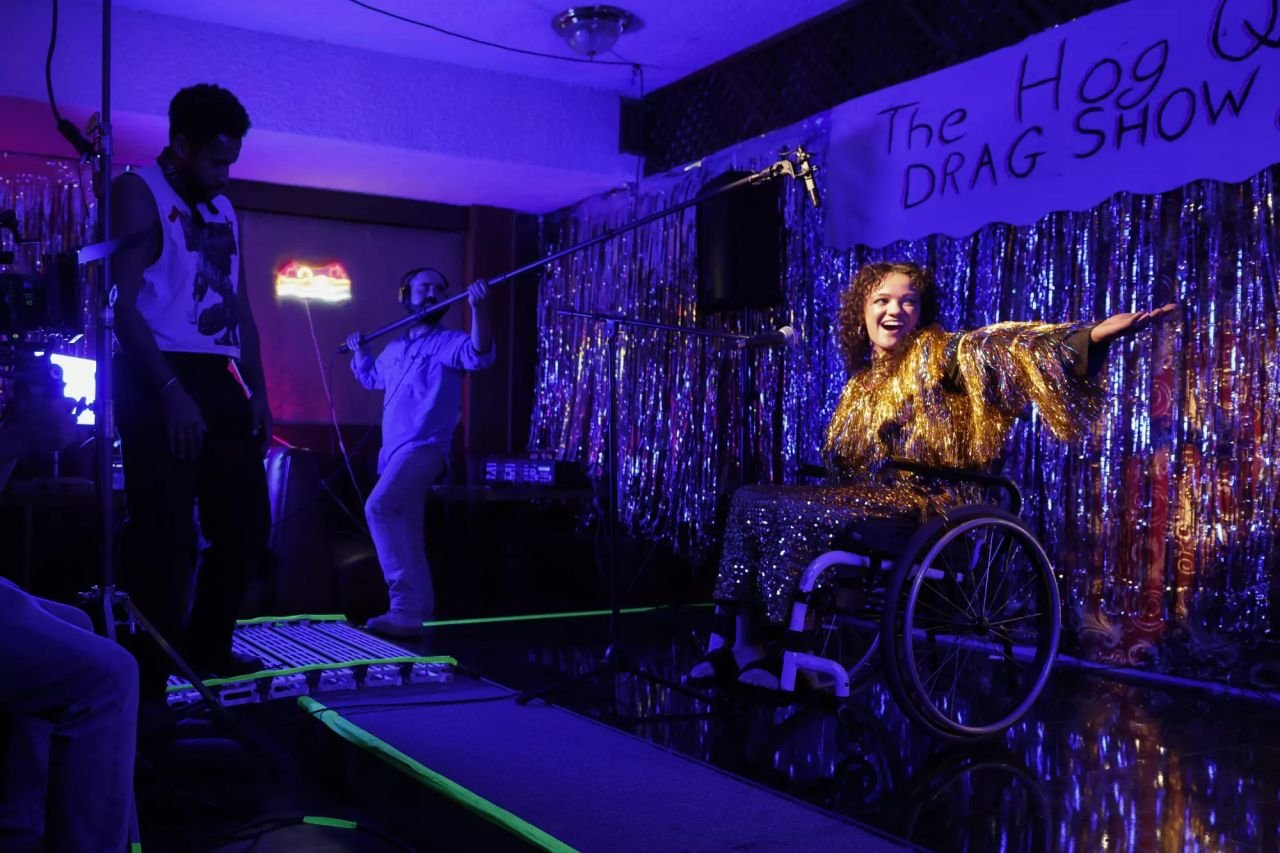Marissa Bode performs during a take of Katherine Craft’s film “The Hog Queen,” filmed this summer in Van Nuys.
(Carlin Stiehl / Los Angeles Times)
Imagine asking a hiring manager in the middle of a job interview, “What’s your line-item budget for accessibility?”
And then just… watching their face.
Most people wouldn’t know what to do with that question. They’ve never had to think about it.
That’s what struck me reading about The Hog Queen in the Los Angeles Times this morning, a short film backed by the Inevitable Foundation, where access wasn’t an afterthought. They made it part of the plan, and wrote into the budget as part of the expectation.
And I thought: what if that was true in every workplace?
I’ve worked in spaces where access was built in, and I’ve worked in ones where it wasn’t. You can feel the difference in your body. When I don’t have to fight for access, when I’m not mentally running through who to email or what barrier to fix, I end the day with energy left to actually do my job. I can lead, I can build, and I can advocate for others instead of just surviving the space I’m in.
That’s what accessibility done right does. It multiplies energy, and turns it into impact.
Yet we keep treating it like a favor to negotiate after the offer’s signed.
Here’s the truth. Most accommodations cost less than $100. What’s expensive is losing good people because a workplace couldn’t be bothered. You don’t save money by skipping access. You just spend more replacing the people you burned out.
If you’re in leadership, start here:
✅ Ask your employees what they need.
✅ Trust them.
✅ Budget for it.
✅ And make it standard.
If you really want to know what your organization values, look at your budget.
If accessibility isn’t on the ledger, it’s not in your culture.
Accessibility should be as normal as a lunch break.
As obvious as a door that opens when you push it.
Show me your budget, and I’ll show you your values.










